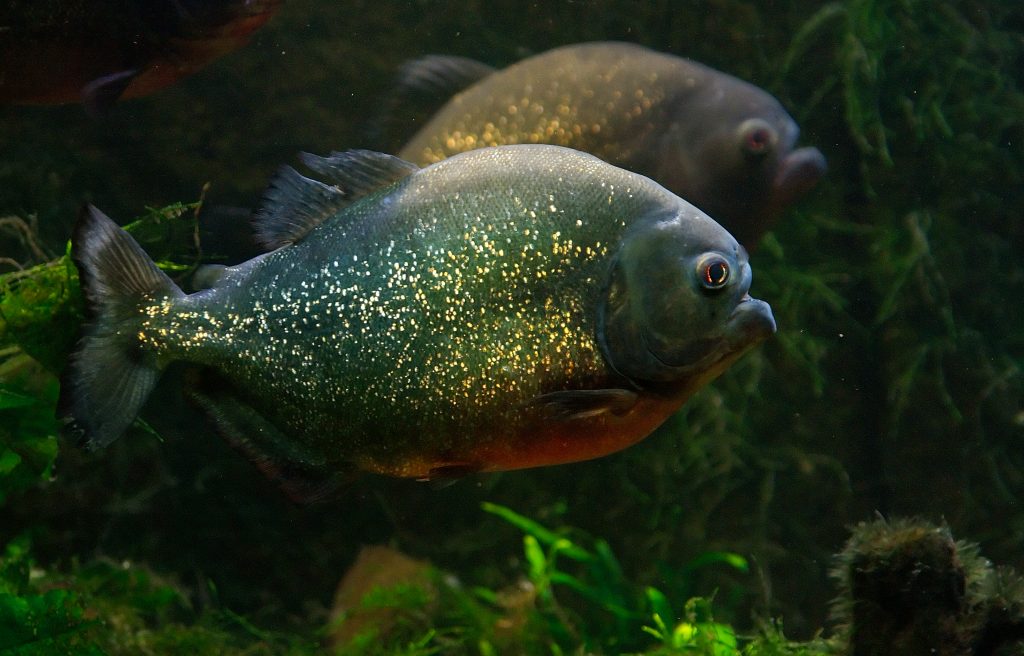Piranhas range in colour from yellow to steel-grey to bluish to partly red to almost black. Piranhas are normally about 15 to 25 centimetres long (6 to 10 inches), although reported individuals have been found to be up to 41 centimetres (24 inches) in length. Piranhas have a bulldog-like face with a very large lower jaw and many razor-sharp teeth. The teeth are replaceable. When one is broken off, a new one grows in its place.
Piranhas are opportunistic carnivores (flesh-eaters). They eat aquatic and land animals that are in the water. Some of their prey includes fish, mollusks, crustaceans, insects, birds, lizards, amphibians, rodents and carrion (carcasses). Piranhas are diurnal (most active during the day).
Piranhas generally eat smaller fish. Larger fish and small mammals may be attacked if there is a school of piranhas. Piranhas are typically found in white-water streams. Piranha Fish are important components of their native environments.

Although largely restricted to lowland waters, these fishes are widespread and inhabit diverse habitats within both lotic (interactions within flowing continental waters) and lentic (interactions within still continental waters) environments. Some piranha species are abundant and multiple species often occur together.
The piranha fish is commonly portrayed and known as a vicious species of fish hunting in large schools. This conception was created from the past belief that piranhas created schools for hunting purposes. Recent research, however, suggests that this is actually used as a defence mechanism against the piranhas natural predators.
Many animals prey upon piranhas (especially young piranhas), including other piranhas, caimans, water snakes, turtles, birds, otters and people. Piranhas reproduce by laying groups of eggs in rivers and lakes.















